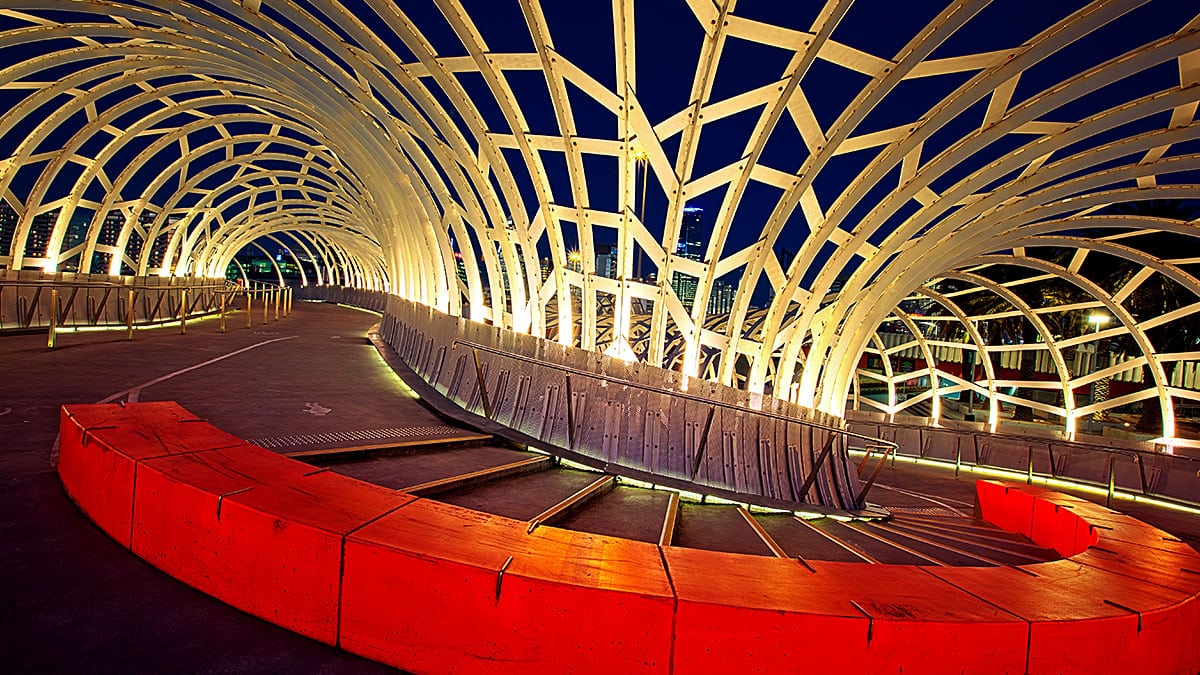Manual repairs on bridges usually mean a few inconvenient things. Usually, a lane closes down and traffic is backed-up for miles. Commuters are late for work or they have to find a different route (if there’s one available), rearranging their schedules until the bridge repair is complete.
There are recent developments that can lead to a solution for the world’s crumbling bridges. “Self-Healing Concrete” sounds like something out of a sci-fi movie, but it is real, and several versions of the material are being tested worldwide. The material is said to have the potential to double the lifespan of bridges.
Why Do Bridges Deteriorate?
Even the tiniest cracks on the surfaces of concrete structures can lead to big problems if they aren’t immediately repaired. While CAD training provides students with knowledge of the proper structure of a bridge, sometimes the issue is actually the durability of the materials used.
Last year, the world swallowed up 3 billion tons of cement, the active ingredient in concrete, according to the Portland Cement Association. Concrete has some great advantages, including a low cost and high compression strength. Its main problem is brittleness. Those with architecture training know that concrete needs steel inside for tensile strength.
The trouble is, a bridge or road surface that mixes steel and concrete is trouble waiting to happen. Traffic makes weight that causes cracks, which let in water and salt, which turn the steel to rust, which causes the whole pad to crumble. The new, self-healing alternatives are formed from different composites altogether. Let’s take a look at what different people are developing around the world.
NRC Institute for Research in Construction
Dr. Daniel Cusson, a senior researcher at the Institute, has invented a durable, high-performance concrete that can increase the average lifespan of bridge decks by 40 years, compared to normal-strength concrete.
His material minimizes shrinkage as well as greatly reduces cracking, which minimizes corrosive agents getting at the steel. His secret? It’s all in the sand. A lightweight porous shale fine aggregate is used, which replaces about a quarter of the normal sand used to make concrete. This porous sand can hold up to 20 percent of its own weight of water, which serves to cure the concrete uniformly of the inside (self-healing!), thus preventing self-desiccation. This self-curing high-grade concrete is under rigorous testing at the NRC facility.
New Developments at the University of Michigan
Civil and environmental engineering professor Victor Li has also has invented a new kind of concrete that hardly ever cracks and, if it does, can repair itself.
It has some of the same ingredients as standard cement, except that the coarser bits of the mix is replaced by microfibers. When the composite undergoes stress, it can bend without cracking. If it does crack, the cracks tend to be less than 50 microns wide–thinner than a human hair. These tiny cracks have the ability to heal themselves.
When Li’s concrete develops hairline cracks, the dry composite is exposed and absorbs moisture in the air. As it does, it fills in the minuscule cracks, thus returning the concrete to its original strength.
The compound is undergoing testing and is said to be a couple of years away from being used on bridges. Li is currently developing a concrete that can not only heal itself but can talk back to monitoring systems once it’s been damaged.
How do you think self-repairing building materials will figure into future CAD courses?



